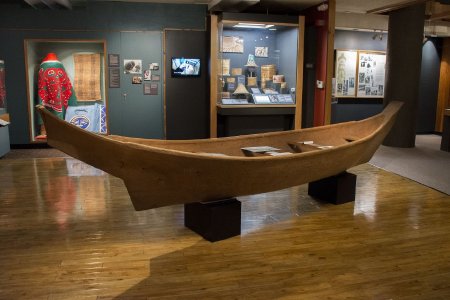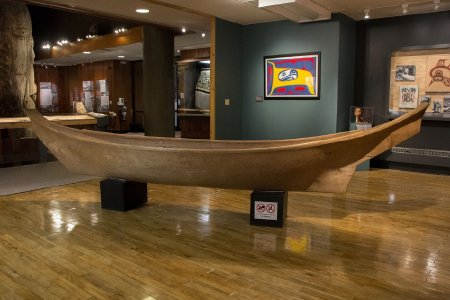Northern-style Canoe, 1990
Steve Brown
Project Leader
In Southeast Alaska, communities are connected by water. Canoes are central to the lifeways and cultural identities of the Indigenous peoples of the region.
For generations Tlingit, Haida, and Tsimshian paddled in canoes to summer fishing camps to attend a feast in another community, trade and exchange goods, harvest berries, hunt sea mammals, and to fish. Indigenous communities continue to participate in canoe journeys, travelling along ancestral water routes to gatherings.
Northwest Coast canoes differ in design and size depending on their functionality. Many were designed for longer journeys over open stretches of ocean.
This Northern-style canoe was crafted by a group of artists gathered for "The Island Carvers Workshop" at the Totem Heritage Center in 1990. The canoe was carved from a single Western Red Cedar log and steam-formed in the traditional manner. Once the carving was nearly complete, the canoe was filled with water. The water was heated to its boiling point using red hot stones. The hot water and steam made the wood pliable, allowing the sides to be bent outward. This technique allowed the builder to make the widest and most stable canoe possible from their chosen log.
Ketchikan Museums
KM 98.2.59.1 EDU


